The 2022 Beijing Winter Olympics is expected to kick off on February 4, 2022. In order to implement the new development ideas, adhere to the spirit of “Green Olympics” and “Humanistic Olympics”, Chongqing University is giving full play to its disciplinary advantages and is now taking the lead of a number of key special projects and tasks as part of the “Scientific and Technological Winter Olympics”, including "key technologies for foundation treatment and safe operation and maintenance of large-area and high-capacity temporary facilities in severe cold mountain", "technical demonstration of complete visual scheme design of Beijing-Zhangjiakou High-speed Railway for Winter Olympics" and "auxiliary support system for environmental factor impact assessment and on-site decision-making of snow sports field".
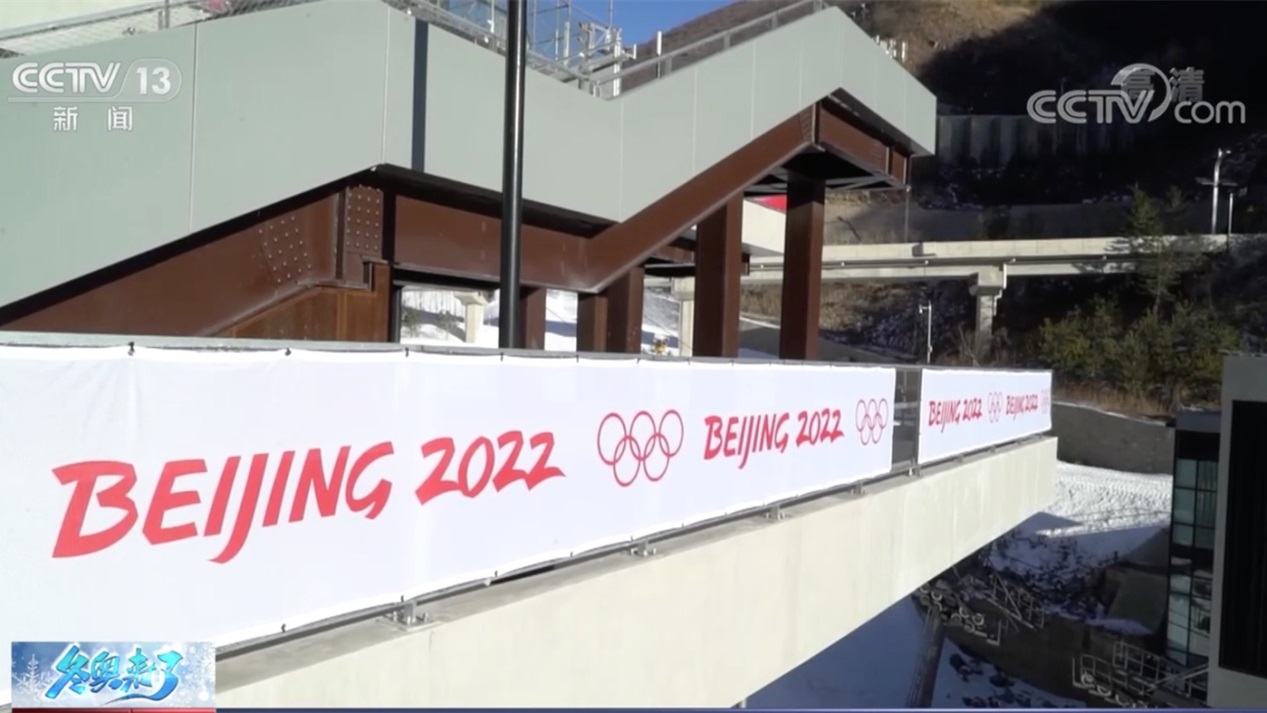
Professor Yang Qingshan, head of the “Scientific and Technological Winter Olympics” team of Chongqing University, said, “The projects undertaken by Chongqing University aim to protect safety of temporary facilities of Winter Olympics, and provide scientific analysis and decision-making basis for the snow sports athletes and instructors, in an ultimate effort to make significant contribution to demonstrate the Olympic spirit, Chinese culture and characteristics of Beijing and Zhangjiakou.”
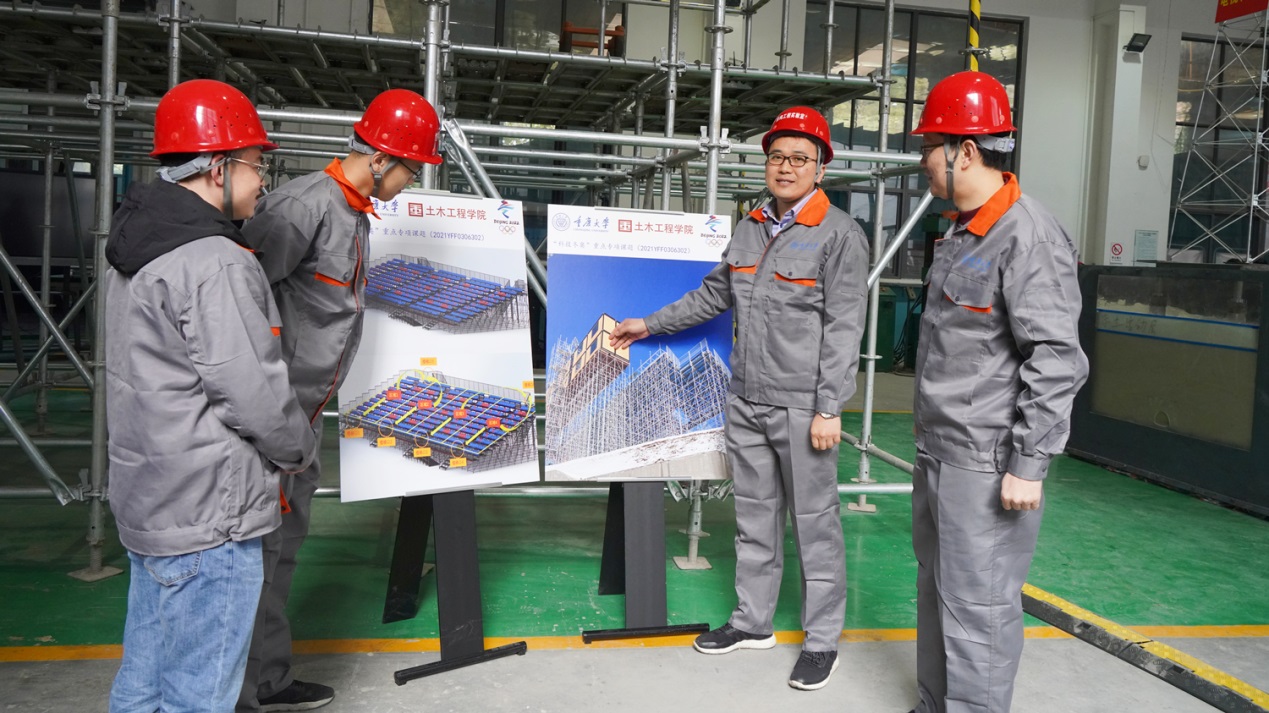
“Check-up” of temporary facilities by structural monitoring system that provides real-time warning
Except for a few permanent venues such as speed skating stadium and ice cube, most of the supporting watching, living and medical treatment infrastructure of the Beijing Winter Olympics are primarily temporary facilities, including spectator stands, broadcasting towers, bridges, LED screens, toilets, and temporary housing. In order to ensure the safety of large-scale temporary facilities under severe cold, mountain and strong wind conditions, Professor Liu Gang, a member of the "Scientific and Technological Winter Olympics" team of Chongqing University and professor of the School of Civil Engineering, developed a safety operation and maintenance monitoring system for large-area and high-capacity temporary facilities under complex terrain in severe cold mountain areas.

"By installing environmental sensors such as temperature and humidity and structural response sensors for vibration, inclination and strain on temporary facilities, the status of temporary stands can be monitored in real time and 'check-ups' be carried out from time to time." According to Professor Liu Gang, the team has installed a total of 30 sets of equipment in Chongli and Yanqing Competition Areas to monitor the safety of temporary facilities. The equipment will not be removed until the Winter Olympics and the Winter Paralympic Games are ended. During this period, all monitoring data will be transmitted to the on-site operation and maintenance personnel in real time to allow them to maintain the temporary facilities in time.
A picture alone is enough for check-up of bolt connections
Most of the temporary facilities for Beijing Winter Olympics are built on the scaffold. As such, it is very important to ensure the safety and firmness of every single connection. A number of bolts are inserted into each "joint" part of the scaffold for the fixation and connection of the "bone". In Yanqing Competition Area alone, as many as 100,000 such small bolts are used. It is obviously impractical to check the connection manually. To solve this problem, the "Scientific and Technological Winter Olympics" team of Chongqing University developed a set of equipment to carry out check-ups of the scaffold of the whole stadium with unmanned aerial vehicle. It takes only a picture to check whether the bolts within the photographing range are installed in place.
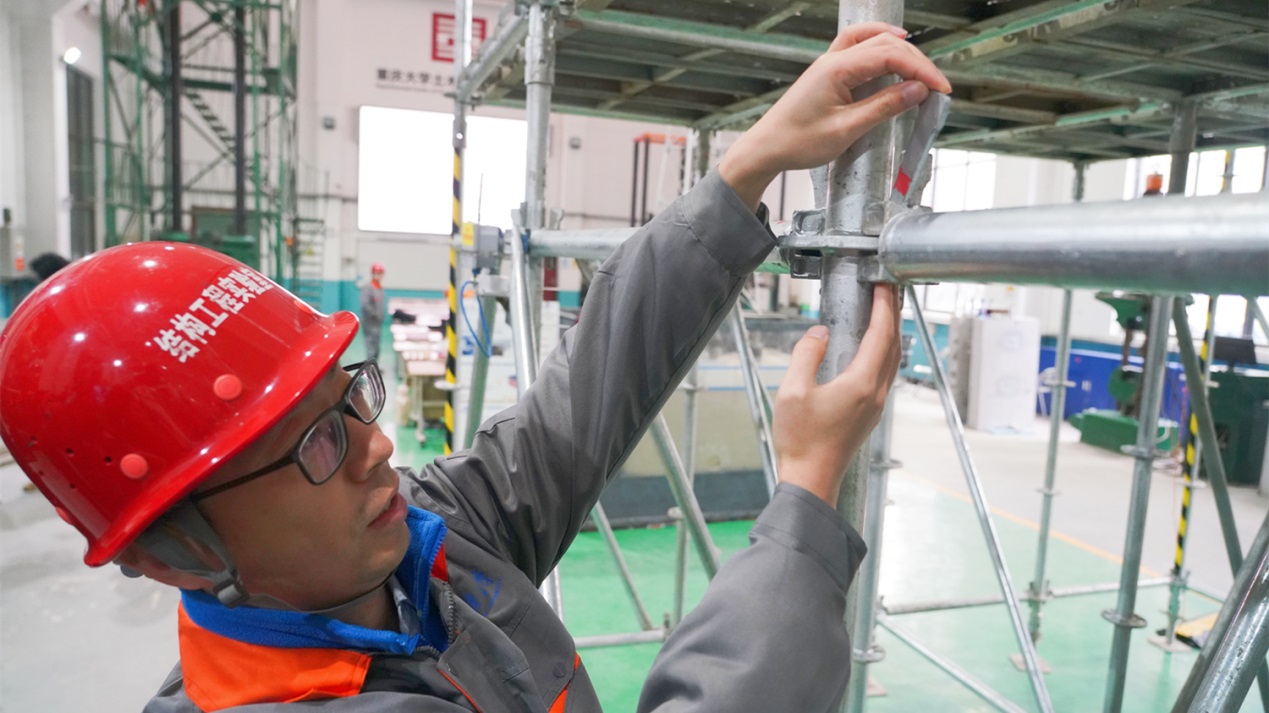
At the site of laboratory testing, the reporter found that each bolt was coated with unique reflective materials before use. If the bolt was not installed properly, the display screen would give a warning immediately. This does not only save time and manpower, but also ensures the safety and stability of temporary facilities to the greatest possible extent. Researcher Hui Yi, a member of the "Scientific and Technological Winter Olympics" team of Chongqing University from the School of Civil Engineering, said, "We have developed two testing systems, one of the lift type and the other of the UAV type, to meet the different needs of the site and provide rapid and accurate testing of whether the bolts are installed properly. The team has visited Yanqing and Chongli Competition Areas many times and scanned each node in detail. The inspection results show that these structures could fully meet the expected use."

Key patented technology supports safe operation of temporary facilities.
A large number of high-flexibility temporary facilities need to be built on the complicated slope terrain in mountainous areas as part of the competition terrain of Beijing Winter Olympics, which poses stringent requirements on the resistance of foundation to deformation. In view of the fact that the bearing capacity of frozen soil is greatly affected by temperature and load under severe cold conditions, Professor Yang Zhongping, a member of the "Scientific and Technological Winter Olympics" team of Chongqing University and professor of the School of Civil Engineering developed a patented technology for rapid treatment of anti-freeze-thaw circulating frozen soil foundation suitable for large-area complex structural load in severe cold mountainous areas, taking into account the characteristics of foundation soil and upper load of the site.
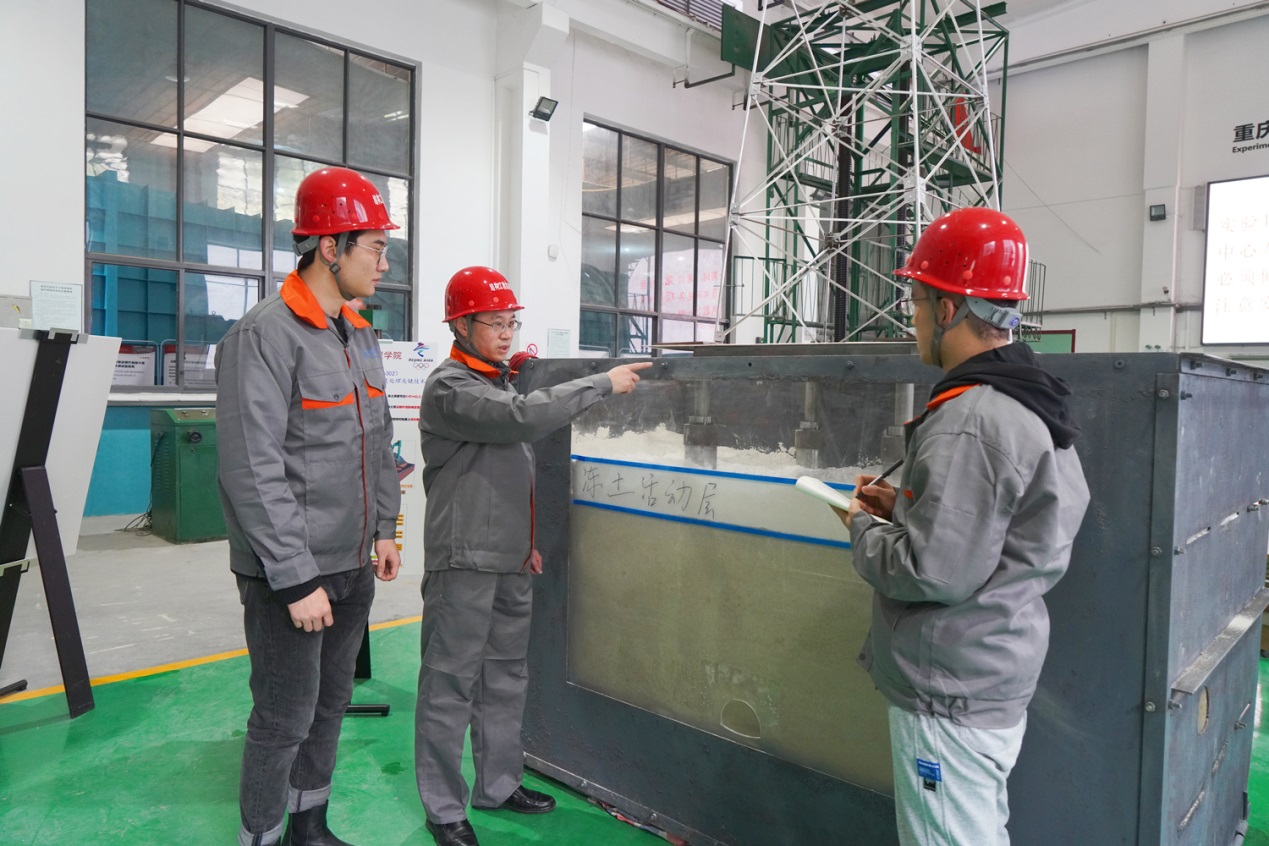
The new pile would greatly improve the bearing capacity. More importantly, the part of the pile body that is inserted deep into the frozen soil layer has an isolation sleeve, which isolates the central bearing steel pipe from the surrounding frozen soil, so as to eliminate the influence of frost heaving and thawing settlement of foundation soil. Besides, the pile body has a spiral blade design, which facilitates mechanical screw drilling construction, so as to ensure rapid and low-disturbance construction. The construction of a single pile takes only more than ten minutes. The pile can be pulled out by reversed rotation and recycled, so as to implement the concept of Green Olympics. The new pile features the ability to eliminate the influence of frozen soil, and efficient construction, and is environment-friendly and recyclable. It can be used as a foundation treatment measure to ensure the safe operation of temporary facilities, as well as an emergency treatment measure.
3D wind tunnel modeling provides individualized training scheme for athletes
The special project in which Chongqing University participates as part of the “Scientific and Technological Winter Olympics” focuses on the research of wind environment of the snow sports field, and provides decision-making basis and support for athletes and instructors of China.
The factors that affect the skiing performance of athletes include body shape, skills and tactics of the athlete, track conditions, snow conditions, wind speed and the characteristics of ski equipment. Athletes are also affected by gravity, air lift and resistance, supporting force of the ground and friction, and skeletal muscle force during taxiing. Among them, air resistance is closely related to the posture of the athletes. Based on the monitoring data, the wind speed at the field can be as high as more than 20-30m/s. In such a case, the direction of the wind speed in the field environment will also pose a great impact on the skiing performance of athletes. Through field survey and 3D modeling, Yan Bowen, an associate professor of the School of Civil Engineering and a member of the "Scientific and Technological Winter Olympics" team of Chongqing University, built a practical, efficient and accurate speed drop model for alpine skiers. This model can be used to work out individualized training scheme based on the tactics, skills, equipment and physical fitness of the athlete, and improve their performance during the competition.
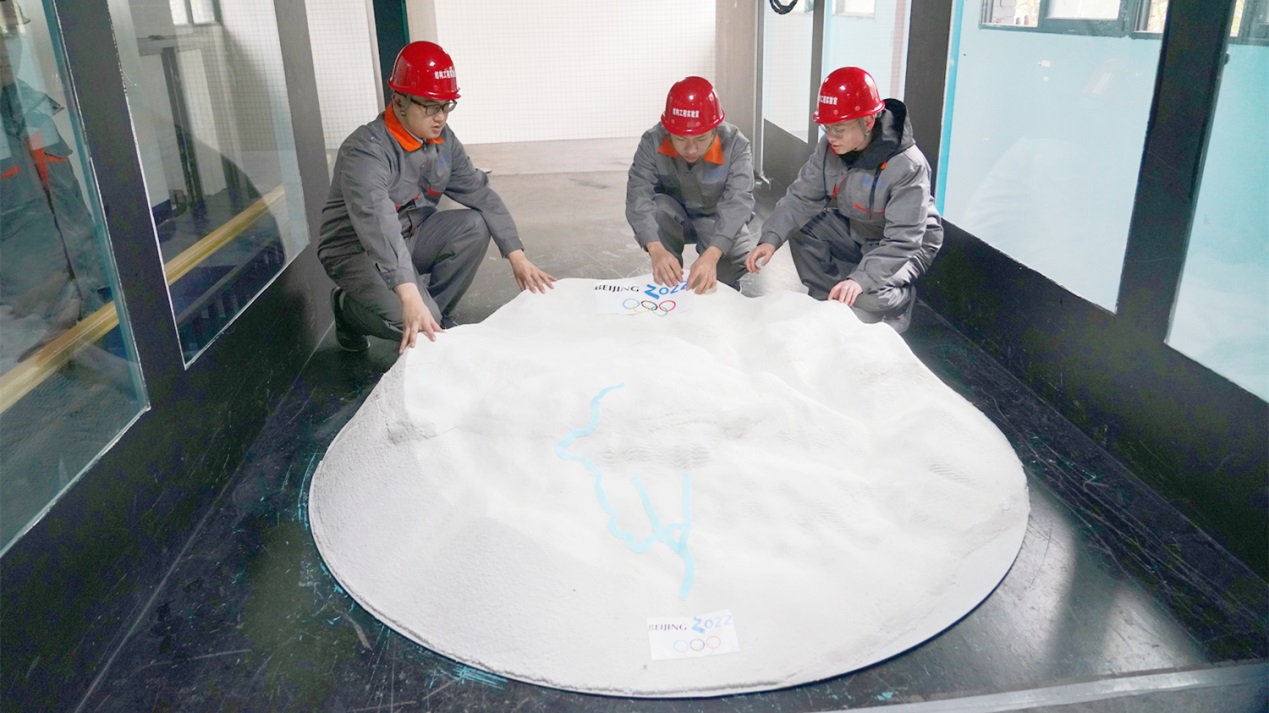
Complete visual scheme design of Beijing-Zhangjiakou High-speed Railway demonstrates Chinese characteristics.
As an important transportation streamline and portal of Beijing Winter Olympics, Beijing-Zhangjiakou High-speed Railway plays a critical role in enhancing the Chinese characteristics of Beijing Winter Olympics by integrating cultural heritage and its living interpretation.
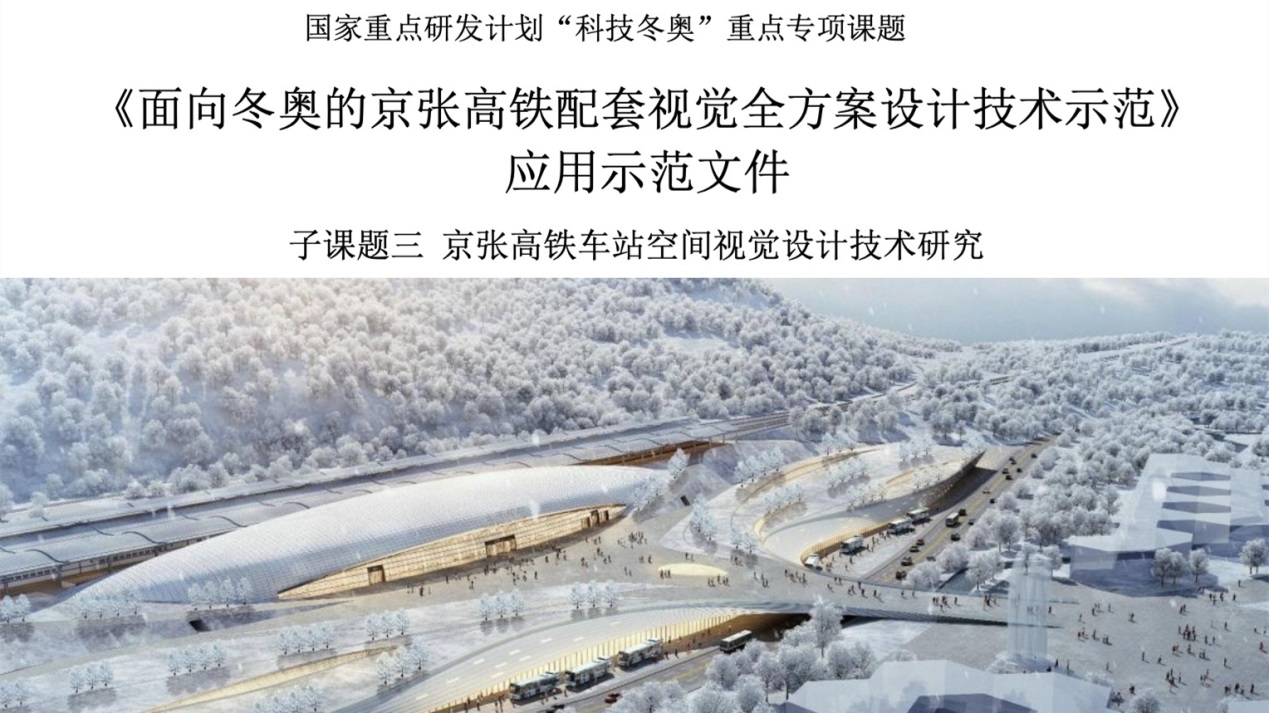
After systematic review of the urban and rural historical and cultural heritage along the Beijing-Zhangjiakou High-speed Railway, Professor Mao Huasong, a member of the "Scientific and Technological Winter Olympics" team of Chongqing University from the School of Architecture and Urban Planning built a database of cultural heritage along the Beijing-Zhangjiakou High-speed Railway and sorted out a system of symbolic cultural design factors. Creative themes such as "colorful Winter Olympics and auspicious spring snow" were proposed in terms of cultural symbols, color system and smart display. The team also carried out systematical studies and demonstration of the internal and external space of high-speed railway stations, marks and visual guide system and cultural and creative products and put forward the matching mechanism and demonstration scheme that are in line with the aesthetic characteristics of Beijing Winter Olympics. The visual language integrating the themes of Winter Olympics, Chinese elements and culture of Beijing and Zhangjiakou is adopted to comprehensively enhance the humanistic experience of Winter Olympic for travelers of Beijing-Zhangjiakou High-speed Railway.
By now, the project team has completed the construction of culture exhibition system of the Beijing-Zhangjiakou High-speed Railway and is currently trying to integrate it into 12306APP. The train coating scheme with the theme of "auspicious spring snow" has been put into trial operation. The space improvement inside and outside the Taizicheng Railway Station, Changcheng Railway Station and other stations has been basically finalized and the implementation plan is currently being studied.